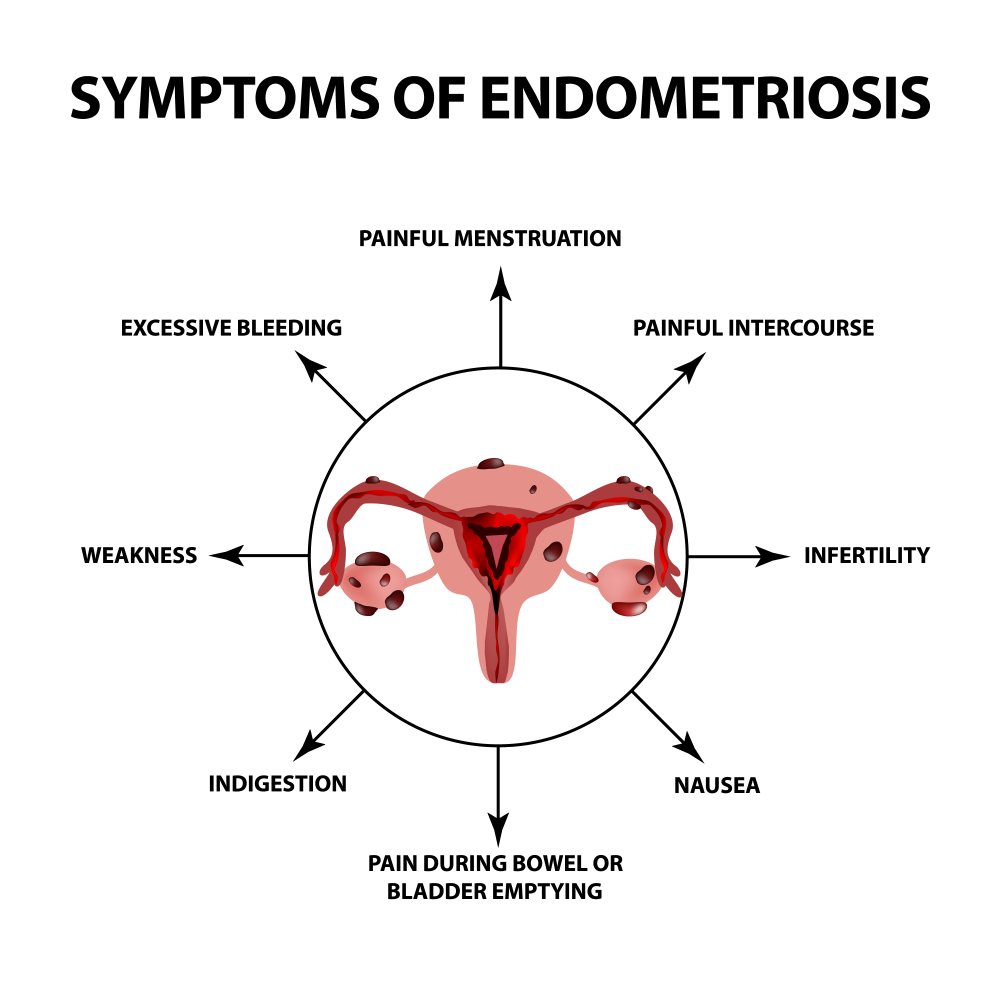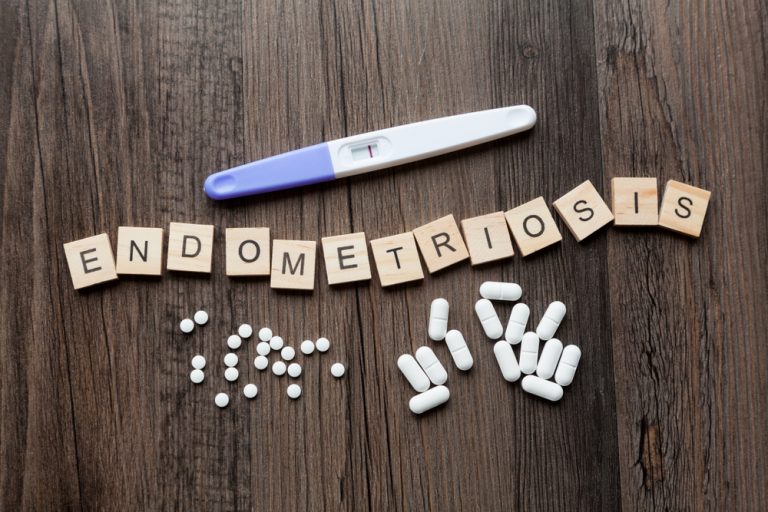Endometriosis, also known as endometrial hypertrophy, is a disease in which the cells of the uterus mucosa (endometrium) are located outside the uterus in the abdominal cavity. The most common symptom of it is heavy menstruation because the cells outside the uterus at the right stage of the cycle start to peel and bleed, resulting in pain and inflammation. This condition is quite common and affects 5-10 per cent of women of childbearing age. The causes of endometriosis are not recognized and the hypotheses have not yet found full scientific justification.
The symptoms of endometriosis
- painful menstruation
- pain during intercourse
- pain during urination and defecation,
- blunt, pulsating, acute pains in the lower abdomen that occur cyclically, most often before menstruation
- lowered fertility

Treatment of endometriosis
Classic methods of treatment of endometriosis include hormonal therapies and administration of analgesics and surgical operations. In the case of up to 40% of treated women, the effects are not satisfactory enough. Hence the search for natural ways to reduce the ailments and influence the cause of the disease.
In the case of natural treatment of endometriosis, the effectiveness of many alternative ways of treatment has been confirmed by scientific research. Natural treatment of endometriosis includes diet, supplementation of various macro and microelements, herbal therapy and acupuncture. Special attention should be paid to diet during endometriosis.
Diet during endometriosis - treatment of endometriosis with diet
The relationship between endometriosis and diet has long been the subject of scientific research. Its role is to supply appropriate fatty acids, strengthen the body's immunity and provide antioxidants to fight inflammation.
The basis of the dietary list in endometriosis are omega 3 fatty acids. They stimulate the action of prostaglandins, i.e. compounds that relieve pain and ailments accompanying the disease. Daily meals should therefore include sources of healthy fats such as oily sea fish (e.g. mackerel, herring, salmon, sardines, tuna), linseed oil, walnut oil.
However, foods providing trans fats, which are found in hard margarine, hardened vegetable oils or sweets, should be excluded from the menu. It is also important to reduce saturated fatty acids, because they stimulate the production of other types of prostaglandins, intensifying the symptoms of endometriosis and maintaining inflammation. Red meat should be replaced by poultry and fish.
Diet in endometriosis
The diet in endometriosis is rich in vegetables and fruits, which provide anti-inflammatory antioxidants that protect cells from damage. Additionally, plant sterols found e.g. in garlic, peas or celery reduce the estrogen activity in the body. The ability to bind them is attributed by the high content of a compound called indole-3-carbinol (I3C) found in broccoli, cabbage, brussels sprouts or mustard. The level of these hormones is also regulated by isoflavones from legumes. It is worth knowing that the regular consumption of vegetables and fruits reduces the risk of endometriosis by 40-70%. It also ensures a proper supply of fibre (similarly to whole-grain cereal products), which improves digestion and accelerates detoxification.
Supporting the treatment of dietary endometriosis also involves the supplementation (preferably in a natural form from food or supplements with natural extracts) of vitamins C, E, A, calcium, magnesium, zinc, iron, selenium and potassium.






